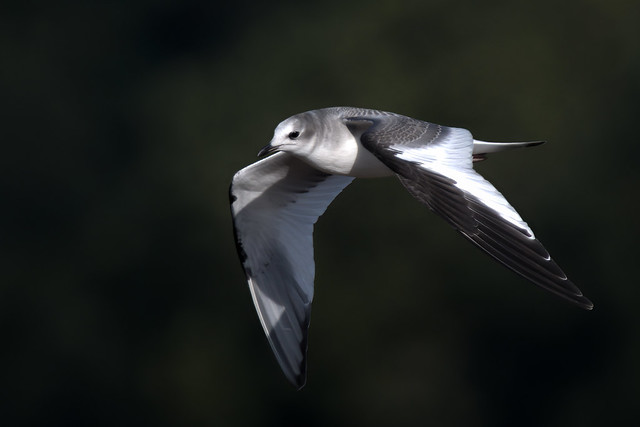
Tim writes: Sabine’s Gulls are quite a difficult gull to see. They breed in the high arctic but migrate south after breeding to spend the winter at sea off the continental shelves in the southern hemisphere. In the Atlantic they mainly winter off southern Africa and South America. They are only occasionally seen from land, usually when storms have blown them inshore. They are rarely seen in Britain in spring, but about a hundred are recorded annually in autumn, usually August to November. I photographed this juvenile which has spent a few days in the Mersey Estuary in mid-September. The trees in the background are not something usually seen in Sabine’s Gull photographs.
The three triangle pattern on its wings is highly distinctive. They also have a forked tail visible here which is accentuated by the juvenile black tail band. It is currently placed in a genus (Xema) all by itself. But rather unexpectedly molecular data suggests its closest relative is the Ivory Gull, which also breeds in the high Arctic but looks nothing like this. The name commemorates Edward Sabine who discovered the gull in 1818 while trying to discover the North West Passage (a route over the top of Canada that reaches the Pacific). He sent the specimen to his brother Joseph who named it in honour of his brother. You cannot name a species after yourself but naming it after your brother sort of circumvents this rule. Joseph called it Larus sabinii but a year later William Leach (of Leach’s Petrel fame) named it Xema sabinii. Xema is just a made up word by a museum taxonomist who was having difficulty finding a name that had not been used before.

Great pictures. That ‘named it after my brother’ dodge is a good one, similarly to Lecoq possibly naming Gallium after himself, as a similar rule applies to elements. (He claimed the naming was after Gaul (Latin Gallia), but chickens being Gallus gallus has made lots of people suspicious that some self commemoration was going on.)